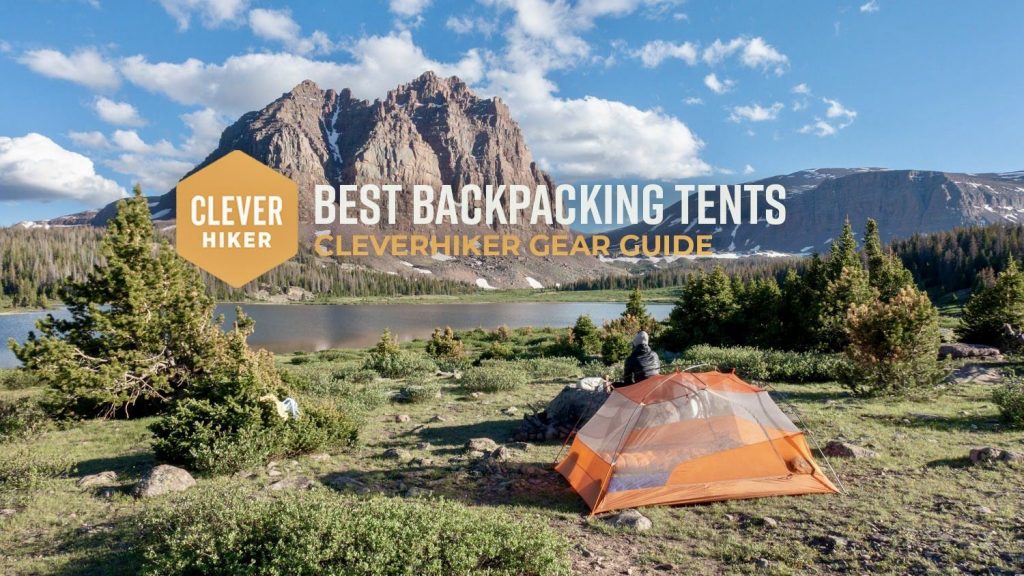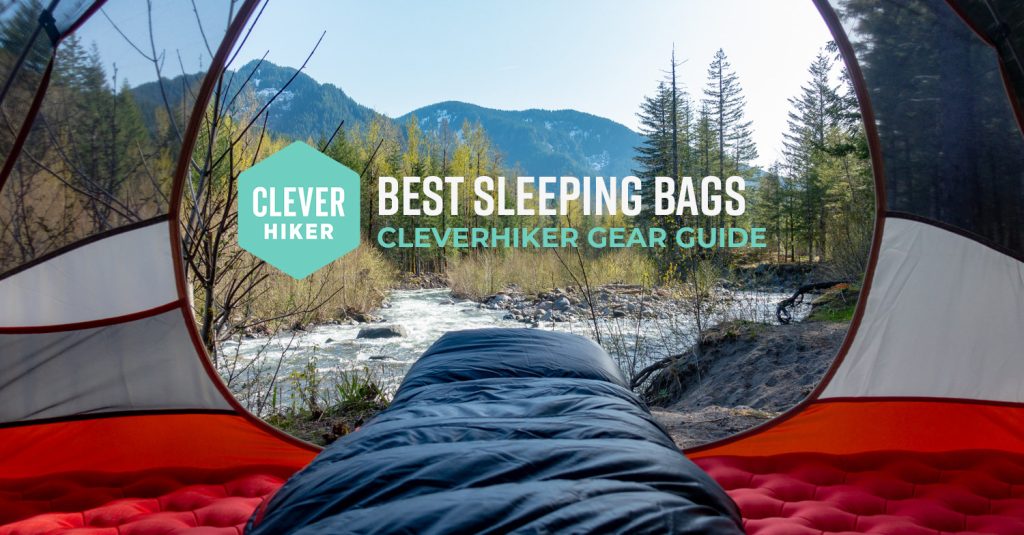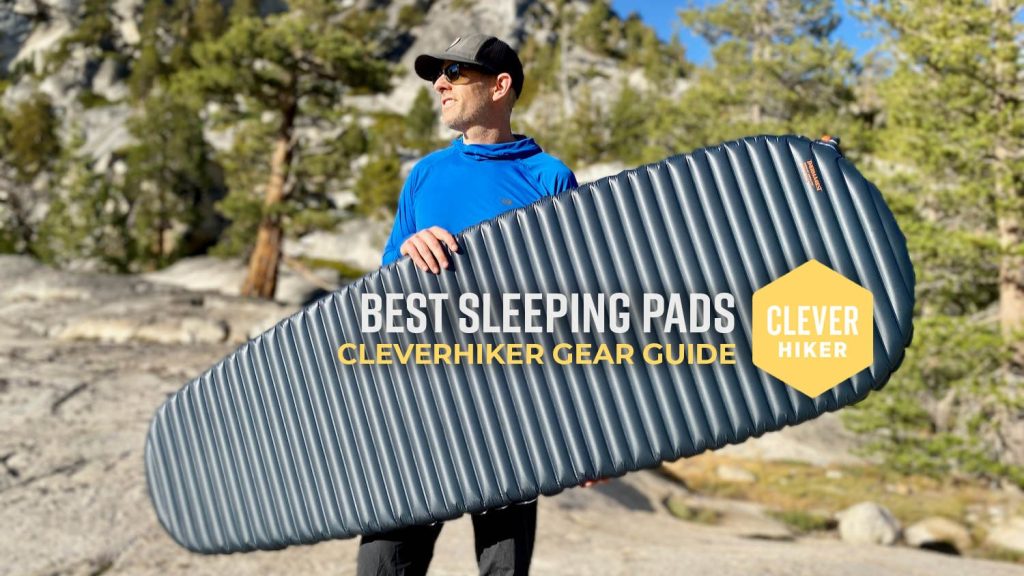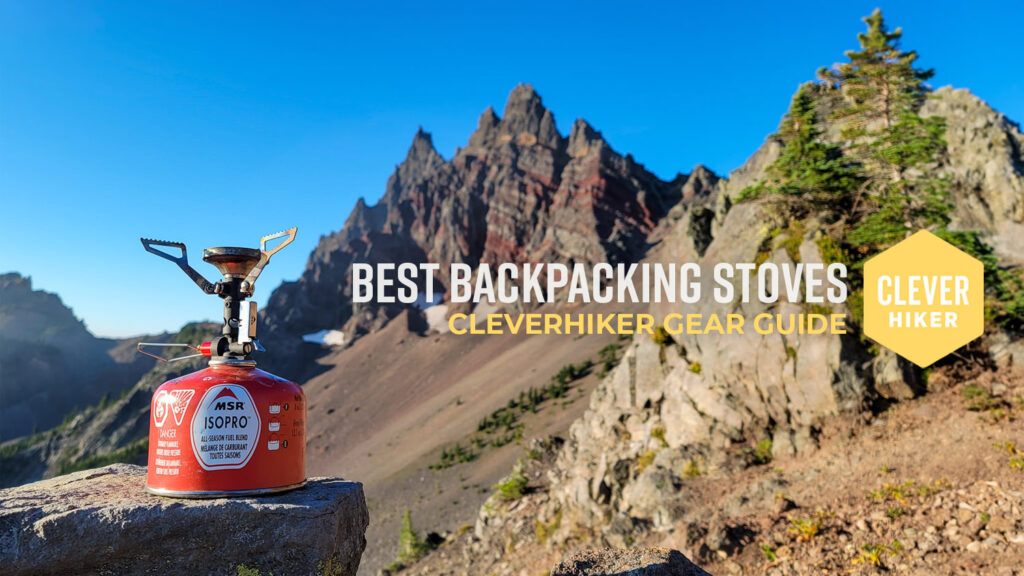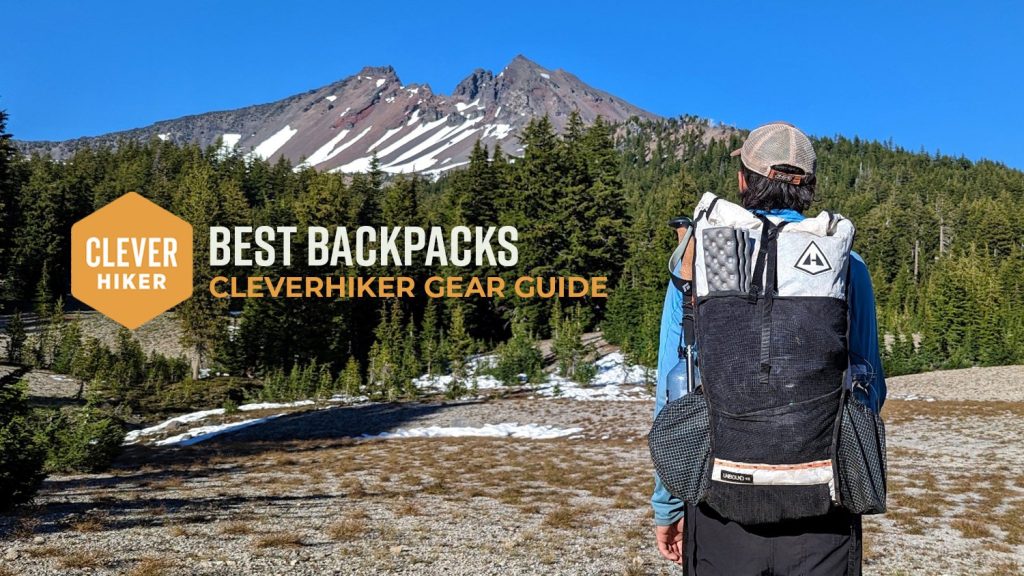We took to the trails to test the most promising hiking pants for women. We looked for the most comfortable, lightweight, and durable options so you’ll feel great in your new ‘fit.
Table of contents
10 Best Hiking Pants for Women 2023
Published :
Some of the links on this page are affiliate links
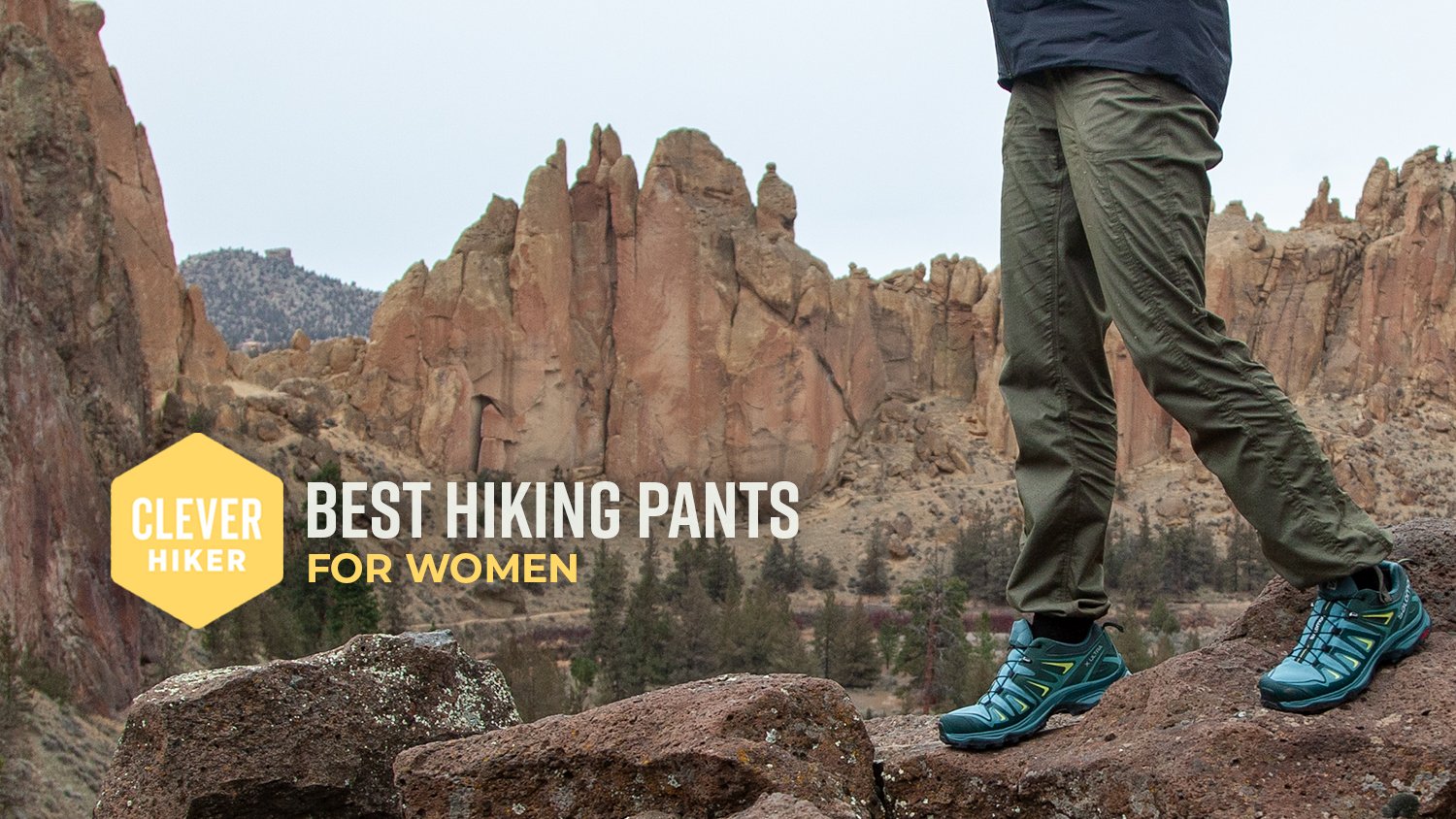
It can be pretty tough to find the perfect pair of hiking pants. They need to be durable and functional as well as comfortable and easy to move in. And it certainly doesn’t hurt if they have a flattering fit. You could spend hours in a store trying on a plethora of pants, but that’s enough to drive anyone up the wall.
We’ve trail-tested dozens of hiking pants over thousands of miles in the rain, sun, and snow to determine our favorites. In this guide, we’ll use our experience and give expert advice to take the guesswork out of finding the best hiking pants for you.
Related: Best Hiking Pants for Men
Quick recommendations
Check out this quick list of the best hiking pants if you’re in a hurry, or continue scrolling to see our full list of favorites with in-depth reviews.
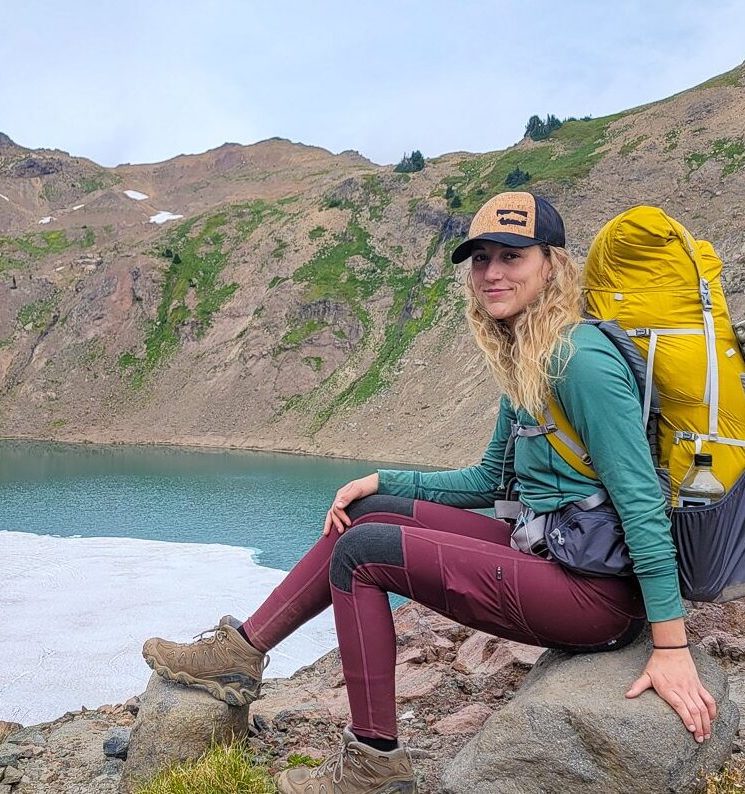
- Best women’s hiking pants overall: The North Face Aphrodite 2.0
- Best budget hiking pants: REI Trailmade
- Best ankle-height hiking pants: Mountain Hardwear Dynama/2 Ankle
- Best convertible hiking pants for women: REI Sahara Convertible
- Most durable leggings for hiking: Fjallraven Abisko Trekking Tights Pro
What’s New:
After doing a ton of testing, we’ve added the REI Trailmade pants which took over the number 2 spot on this list as well as the title of best budget hiking pants. We’ve also added some new photos from field testing.
Hiking Pants Comparison Table

- Super comfy
- Affordable
- Easy to adjust length with ankle cinch
- Stretchy fabric
- Easy to move in
- Lightweight
- Inclusive sizing
- Minimal pockets
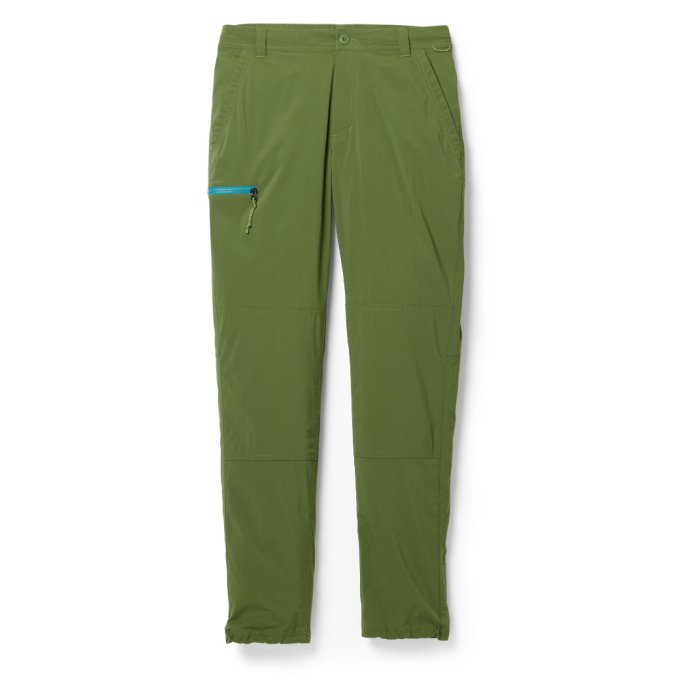
- Affordable
- Flattering fit
- Easy to adjust length with ankle cinch
- Easy to move in
- Lightweight
- Breathable
- Inclusive sizing
- Fabric is a bit thin
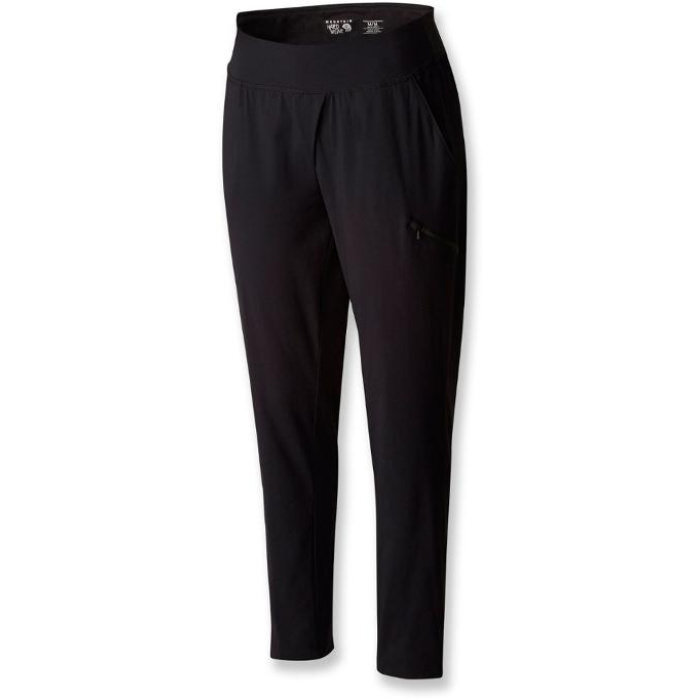
- Super comfy
- Affordable
- Flattering fit
- Ultralight
- Breathable
- Stretchy
- Durable
- No waist adjustments
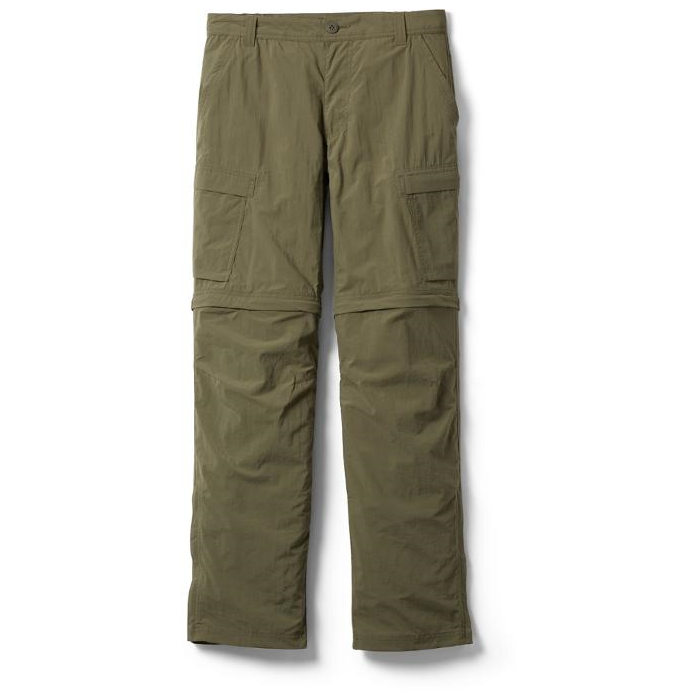
- Affordable
- Versatile
- Breathable
- Good pockets
- Comfy fit
- Easy to convert
- Inclusive sizing
- Somewhat unflattering as pants & as shorts
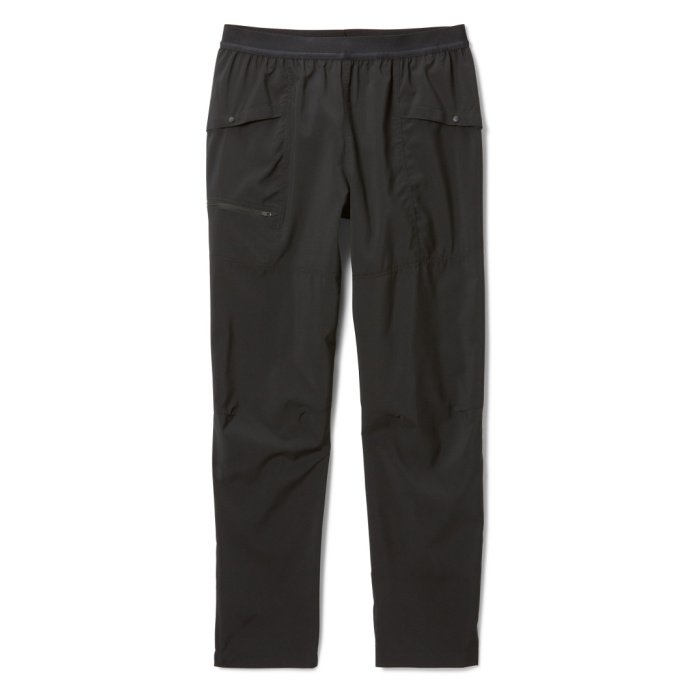
- Affordable
- Breathable
- Ultralight
- Comfortable
- Easy to move in
- Secure pockets
- Somewhat boxy fit
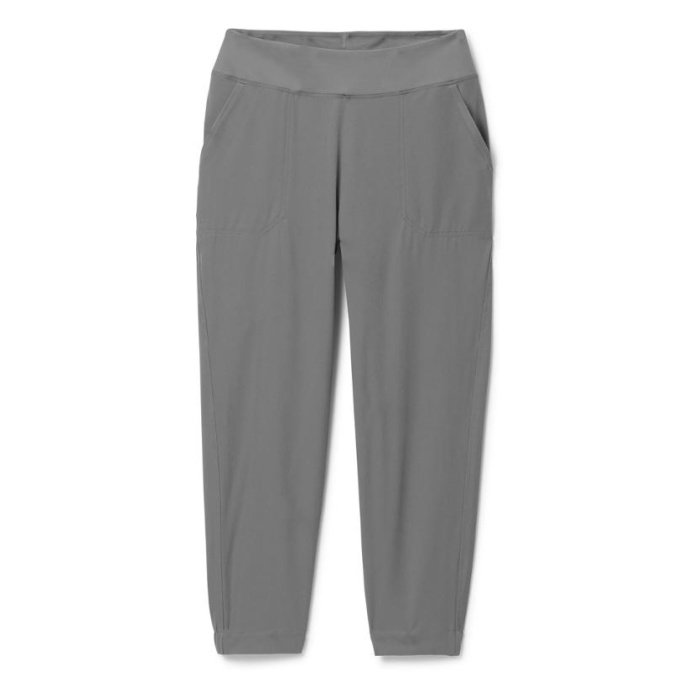
- Super comfy
- Versatile
- Easy to move in
- Lightweight
- Breathable
- Flattering fit
- Stretchy
- A bit expensive
- No waist adjustments
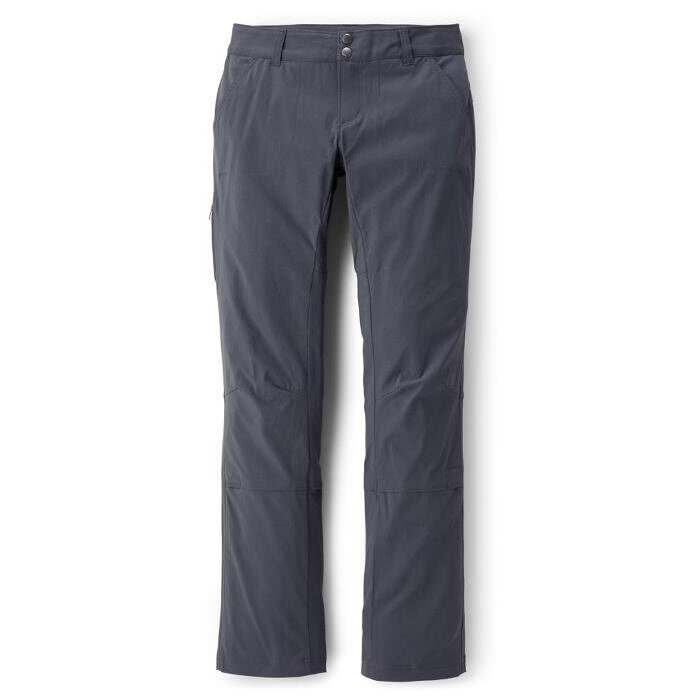
- Affordable
- Flattering fit
- Roll up is at a good height
- Easy to move in
- Breathable
- Inclusive sizing
- Not our favorite pocket design
- Fabric is a bit thin

- Durable
- Easy to move in
- Lightweight
- Comfy
- Useful pockets
- Expensive
- Too tight to roll up
- A bit warm for hot summer conditions
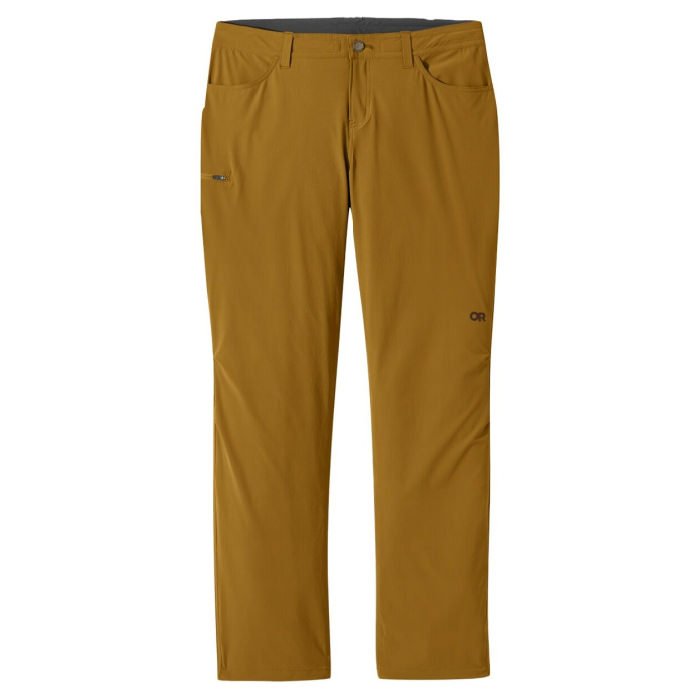
- Super comfy
- Soft waistband
- Easy to move in
- Breathable
- Flattering fit
- Easy to adjust length with ankle cinch
- Lightweight
- Inclusive sizing
- A bit expensive
- Ankle cinch isn’t our favorite
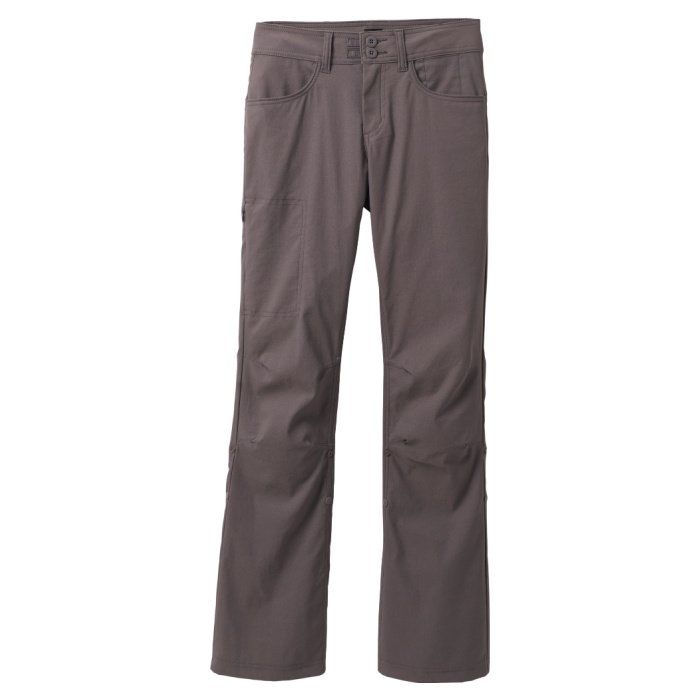
- Comfy fit
- Durable
- Easy to move in
- Good roll-up length
- Breathable
- Inclusive sizing
- A bit baggy in the calf
- A bit expensive

- Stylish
- Stretchy
- Comfortable
- Easy to move in
- Flattering fit
- Secure pockets
- Inclusive sizing
- A bit expensive
- A bit heavy
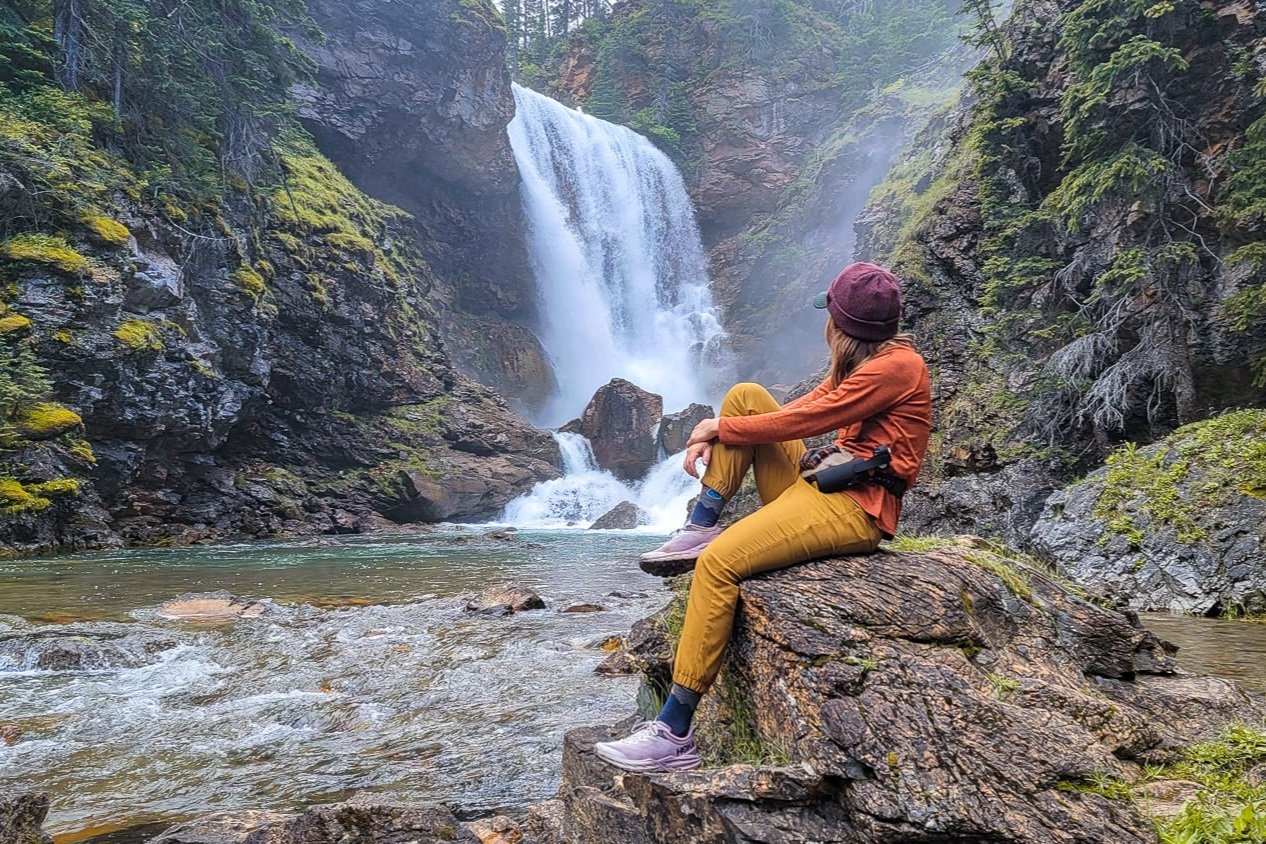
What’s Most Important to You in a Pair of Hiking Pants?
PRICE:
We recommend spending a bit more on high-quality clothing that you plan to wear a lot. The increase in comfort and durability is worth the cost and can actually save you money in the long run since you won’t have to replace items that don’t perform well or that wear out quickly. No matter your budget, you won’t go wrong with any of our trail-tested hiking pant recommendations below.
- Best budget hiking pants: REI Trailmade, Columbia Saturday Trail, The North Face Aphrodite 2.0, REI Sahara Convertible, Mountain Hardwear Dynama/2 Ankle, Mountain Hardwear Trail Sender
- Best mid-range hiking pants: prAna Halle II, Patagonia Happy Hike, Outdoor Research Ferrosi, prAna Halle E-Waist Jogger II
- Best high-end hiking pants: Fjallraven Abisko Trekking Tights Pro
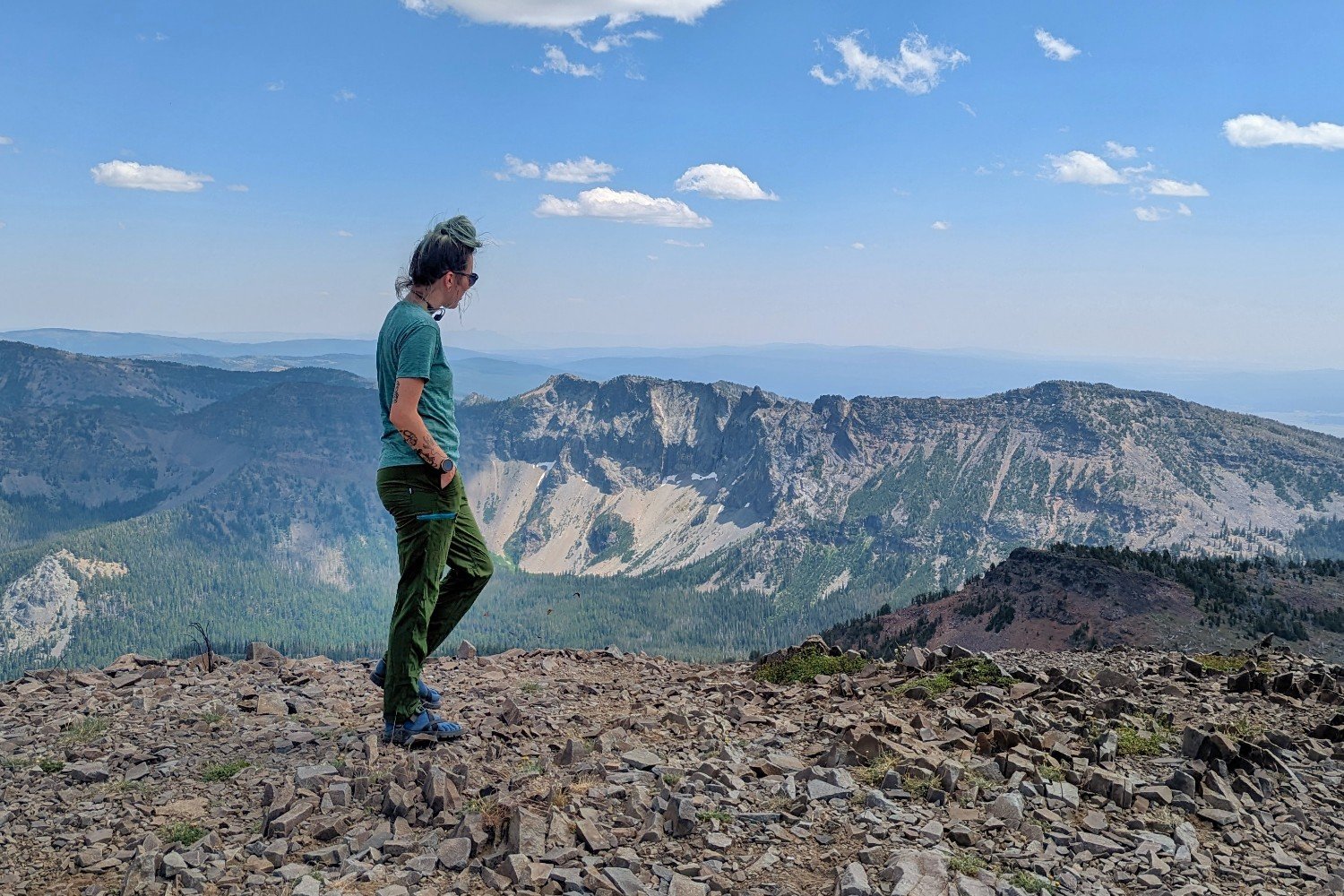
WEIGHT:
We tend to go for lightweight hiking pants because they’re often more breathable and easier to move in. That’s not to say pants that weigh more are bad though! Heavy-duty hiking pants are the better choice if you do a lot of off-trail hiking or if you tend to be harder on clothing.
- Best ultralight hiking pants: Mountain Hardwear Trail Sender, Mountain Hardwear Dynama/2 Ankle
- Best lightweight hiking pants: REI Trailmade, The North Face Aphrodite 2.0, Fjallraven Abisko Trekking Tights Pro, Patagonia Happy Hike, Columbia Saturday Trail, Outdoor Research Ferrosi, REI Sahara Convertible
- Best heavy-duty hiking pants: prAna Halle II

STYLE:
Some hikers like simple hiking pants that transition well from town to trail while others look for convertible pants with pockets galore. The right fit for you will depend on personal preference.
Convertible pants are very versatile and usually have a ton of pockets, but they may have a less flattering fit. Minimal hiking pants – like joggers and ankle pants – usually have a comfortable, relaxed fit and just a few handy pockets, but some hikers may find them too simple. Roll-up pants usually have a nice mix of flattering fit, useful pockets, and adjustability, so they’re often a good place to start for hikers who aren’t sure about their preference yet.
- Best minimal hiking pants: North Face Aphrodite 2.0, REI Trailmade, Mountain Hardwear Dynama/2 Ankle, Mountain Hardwear Trail Sender, Fjallraven Abisko Trekking Tights Pro, Patagonia Happy Hike, prAna Halle E-Waist Jogger II
- Best roll-up hiking pants: prAna Halle II, Columbia Saturday Trail
- Best convertible hiking pants: REI Sahara Convertible, Columbia Saturday Trail Convertible
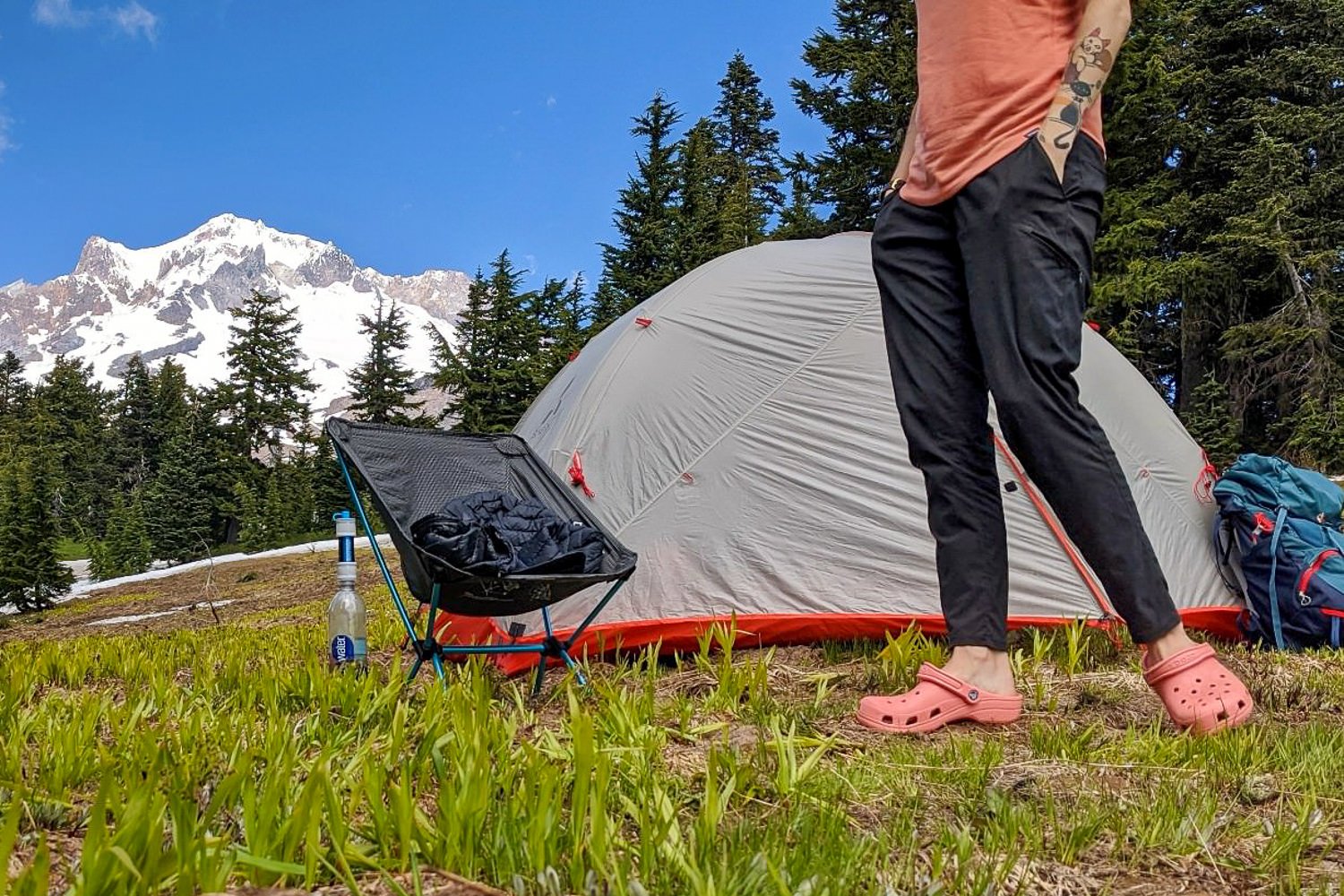
DURABILITY:
Any good pair of hiking pants should keep you protected from scrapes and bugs, but you may want to opt for an extra-durable pair if you’ll be hiking in particularly rugged country or traveling off trail. If durability is a top priority for you, always buy from reputable brands that use high-quality materials (like the ones on this list), look for reinforcements in high-impact places (like the seat and knees), and opt for pants that are made with thicker fabric.
- Most durable hiking pants: Fjallraven Abisko Trekking Tights Pro, prAna Halle II, prAna Halle E-Waist Jogger II, REI Sahara Convertible

INCLUSIVE SIZING:
Everyone should have high performance options that make them feel great and look great. After all, the outdoors is for everyone!
- Hiking pants with inclusive sizing: The North Face Aphrodite 2.0, REI Trailmade, REI Sahara Convertible, Columbia Saturday Trail, Outdoor Research Ferrosi, prAna Halle II, prAna Halle E-Waist Jogger II
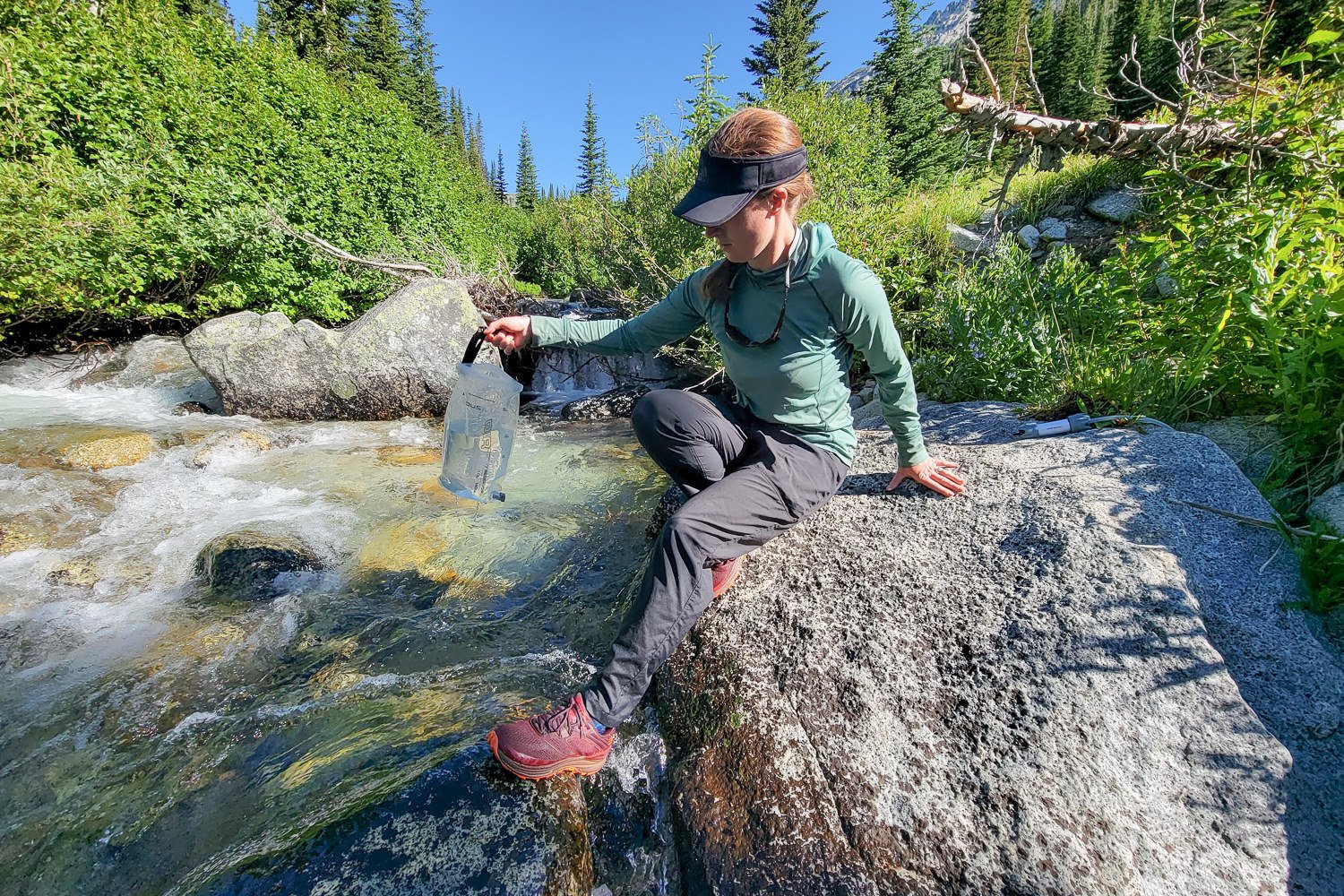
Best Women’s Hiking Pants of 2023

Women’s The North Face Aphrodite 2.0
Best women’s hiking pants overall for comfort, price & versatility
Price: $80
Weight: 8.6 oz.
Fit: Relaxed
Fabric: 95% nylon, 5% elastane
Pros
- Super comfy
- Affordable
- Easy to adjust length with ankle cinch
- Stretchy fabric
- Easy to move in
- Lightweight
- Inclusive sizing
Cons
- Minimal pockets
The North Face Aphrodite 2.0 Pants are exceptionally comfortable and easy to move in, so they’re a great choice for everything from hiking, to traveling, to going out for brunch. The fit is relaxed, and the cut looks and feels great on any body type.
The Aphrodite pants have drawcords on the ankle cuffs, so you can choose what length to wear them at. This adaptability lets you stay protected in buggy areas, catch a breeze on hot days, and match your personal style when wearing them around town. The simple pocket arrangement (two hand pockets and a concealed zipper pocket on the right hip) keeps the profile of these pants sleek while providing enough storage for small essentials like a wallet or phone.
Best of all, the Aphrodites are some of the most affordable hiking pants on our list. So if you’re searching for the perfect blend of cost, quality, and style – you’ve found it in the Aphrodites.

Women’s REI Trailmade
Best budget hiking pants
Price: $70
Weight: 7.8 oz.
Fit: Relaxed
Fabric: 94% nylon, 6% Spandex
Pros
- Affordable
- Flattering fit
- Easy to adjust length with ankle cinch
- Easy to move in
- Lightweight
- Breathable
- Inclusive sizing
Cons
- Fabric is a bit thin
It was instant love the very first time we put on the REI Trailmade pants. These affordable hiking pants are surprisingly flattering for technical clothing, but not at the expense of functionality.
With hand pockets that are actually deep enough to serve a purpose, two smaller pockets on the bum, and a zippered cargo pocket on the right thigh, the Trailmades will keep you organized without leaving you feeling weighed down or bulky. While the lightweight fabric may not be cut out for trails with a ton of bushwhacking, it’s breathable, comfortable, and dries quickly. These pants also have a decent amount of stretch, so the fit hugs body curvature nicely but doesn’t get in the way of scrambling.
The Trailmades have quickly become one of our favorite pairs of hiking pants, and we really view them as more of a tie for the number one spot with the Aphrodites than a number two on the list.

Women’s Mountain Hardwear Dynama/2 Ankle
Best ankle-height hiking pants for women
Price: $85
Weight: 6.6 oz.
Fit: Relaxed slim, high ankle cut
Fabric: 96% nylon, 4% elastane
Pros
- Super comfy
- Affordable
- Flattering fit
- Ultralight
- Breathable
- Stretchy
- Durable
Cons
- No waist adjustments
The Mountain Hardwear Dynama/2 Ankle Pants are the lightest hiking pants we’ve tested, and their minimal design keeps them airy and easy to move in. Mountain Hardwear kept the features of the Dynamas simple, yet highly functional – relaxed slim fit, flattering ankle-length cut, two hand pockets, and a zippered leg pocket.
Some hikers may prefer to have an adjustable waist. But we love that there are no zippers, buttons, or drawstrings to deal with, because it makes the Dynamas very comfortable to wear under a hipbelt when backpacking. We’ve worn the Dynama pants for many hundreds of miles now (including a thru-hike on Vermont’s Long Trail), and they’re amazingly durable for how lightweight they are.
The affordable Dynamas are a go-to for us, and hikers wanting a flattering and streamlined pair of hiking pants will absolutely love them.

Women’s REI Sahara Convertible
Best convertible hiking pants for women
Price: $80
Weight: 9.6 oz.
Fit: Relaxed
Fabric: 96% nylon, 4% Spandex
Pros
- Affordable
- Versatile
- Breathable
- Good pockets
- Comfy fit
- Easy to convert
- Inclusive sizing
Cons
- Somewhat unflattering as pants & as shorts
The REI Sahara Convertible Pants are designed with a plethora of useful features and pockets for utilitarian hikers. These pants have zip-off legs and can convert into cargo shorts on hot days. This makes the affordable price even more appealing since you’re getting a pair of pants and a pair of shorts all rolled into one.
The zippers that run up the side of the leg allow you to make the pants-to-shorts transition without taking off your shoes, and the color-coded conversion zippers make for an effortless switch back to pants. The drawstring at the waist helps dial in the fit of these pants, but there are also belt loops if you prefer to use a belt.
We can’t lie, we’re not the biggest fans of the convertible/cargo pant look because they’re a bit busy and baggier than our preferred style. That said – you’re wearing these on a trail, not a runway at fashion week. And you’d be hard-pressed to find any fault in the functionality of the Sahara Pants.

Women’s Mountain Hardwear Trail Sender
Best women’s hiking pants for hot weather
Price: $85
Weight: 6 oz.
Fit: Relaxed
Fabric: 100% ripstop polyester
Pros
- Affordable
- Breathable
- Ultralight
- Comfortable
- Easy to move in
- Secure pockets
Cons
- Somewhat boxy fit
The Mountain Hardwear Trail Sender Pants are even better than shorts when you’re hiking in exposed, alpine terrain. They provide full-length leg protection from the sun, bugs, and brush, but unlike many pants – they breathe! The ultralight fabric lets even the slightest breeze pass through, which is such sweet relief when you’re chugging up switchbacks.
The Trail Senders’ light fabric not only keeps you cool, but it also adds minimal weight to your pack so you can afford to carry both shorts and pants if you want to. Admittedly, these britches don’t feel as stylish as some of our favorites because the fit is slightly loose and billowy. Still, they’re some of our absolute favorites since they’re so exceptionally comfy and are essentially performance sweatpants.
If you’re looking for simplicity, comfort in warm summer hiking conditions, and effective skin protection for your legs, we’re certain you’ll love the Trail Sender pants. We like them so much, we’re getting them in multiple colors.

Women’s Patagonia Happy Hike
Best jogger pants for hiking
Price: $99
Weight: 8.9 oz.
Fit: Relaxed slim, tapered, ankle length
Fabric: 89% polyester, 11% Spandex
Pros
- Super comfy
- Versatile
- Easy to move in
- Lightweight
- Breathable
- Flattering fit
- Stretchy
Cons
- A bit expensive
- No waist adjustments
We’re not kidding when we say that the Patagonia Happy Hikes are the most comfy hiking pants we’ve ever worn. Their flattering fit will keep you feeling cool and confident on the trail, and they transition seamlessly to post-hike drinks.
The ankle height provides an excellent balance of coverage and temperature regulation, but you can also use the elastic ankle to wear the Happy Hikes as capris on really hot days. The wide, flat waistband doesn’t pinch, and it sits comfortably under a hipbelt since there are no buttons, zippers, or drawstrings to get in the way.
We like them so much that we often wear them around the house or for running errands when we want to look put together with minimal effort. The stylish, do-it-all Happy Hike pants are an excellent choice for hikers looking for a new favorite pair of pants to live in.

Women’s Columbia Saturday Trail
Affordable hiking pants with a flattering fit
Price: $70
Weight: 9 oz.
Fit: Relaxed
Fabric: 96% nylon, 4% elastane
Pros
- Affordable
- Flattering fit
- Roll up is at a good height
- Easy to move in
- Breathable
- Inclusive sizing
Cons
- Not our favorite pocket design
- Fabric is a bit thin
The Columbia Saturday Trails are the most affordable hiking pants on our list, and they’re also some of our all-time favorite roll-ups. We often find that roll-up pants don’t roll to a very useful height – generally somewhere just above the ankle bone. But the Saturday Trail pants snap up about mid-calf when rolled and the straps tuck neatly into a sewn-in hood. This gives a really clean look and keeps the pant legs out of the way when crossing streams.
The Saturday Trails are super breathable, so they’re nice on warm weather hikes. But they work best when paired with base layer bottoms on chilly days. Hikers looking for a ton of useful pockets may find the Saturday Trails less than ideal. The hand pockets are shallow and the zippered leg pocket holds items at the back of your leg, which can feel a bit awkward.
That said, we don’t typically keep things in our pockets when hiking, so we didn’t find this to be a big deal. We think the affordable price tag, flattering fit, and functional roll-up design more then makes up for the less convenient pockets.

Women’s Fjallraven Abisko Trekking Tights Pro
Most durable leggings for hiking
Price: $150
Weight: 8.6 oz.
Fit: Tight, high waist
Fabric: 71% polyester, 29% elastane
Pros
- Durable
- Easy to move in
- Lightweight
- Comfy
- Useful pockets
Cons
- Expensive
- Too tight to roll up
- A bit warm for hot summer conditions
The Fjallraven Abisko Trekking Tights Pro have a strange way of making you feel ready for anything when you put them on. They have quite a bit of compression for a supportive feel and plenty of pockets to keep you well-equipped.
These tights are expensive, so they’re best for those who are sure they’ll put them to hard use. But the Abiskos should last you for a very long time thanks to the reinforced Cordura panels on the seat and knees. We often find that the pockets on leggings tend to be a little lackluster compared to those on hiking pants, but the Abiskos have great storage options. There are two deep, stretchy pockets – an open one on the left leg for easy access, and a pocket with a flap over the top on the right leg for securing items.
While the Abiskos aren’t exactly pants, we felt they deserved a prominent spot on this list because they offer more durability than many of the lighter weight hiking pants featured. If you’re a fan of leggings, you might also want to check out our full list of the Best Hiking Leggings.

Women’s Outdoor Research Ferrosi
Lightweight,stretchy & breathable hiking pants
Price: $99
Weight: 9 oz.
Fit: Relaxed on calf, fitted on thigh
Fabric: 86% ripstop nylon, 14% Spandex
Pros
- Super comfy
- Soft waistband
- Easy to move in
- Breathable
- Flattering fit
- Easy to adjust length with ankle cinch
- Lightweight
- Inclusive sizing
Cons
- A bit expensive
- Ankle cinch isn’t our favorite
The Ferrosi line from Outdoor Research has been a favorite among hikers for years, and the newest iteration is the best yet. The redesigned Outdoor Research Ferrosi Pants have a soft waistband, drawcords at the ankle to adjust the height, and plenty of stretch.
The stretchy fabric allows you to easily tackle rock scrambles and fallen trees on the trail without impeding your movement, so they’re great for challenging hikes. The thoughtful pocket layout provides plenty of storage options without feeling busy – several of the pockets even have low-profile zippers for keeping small items secure.
While we love the drawcords at the ankle for adjusting the height, they’re not as secure or durable as the snaps found on many other roll-up pants. Still, they get the job done and we like that they can be completely hidden away when the cuffs are rolled up.

Women’s prAna Halle II
Durable hiking pants for all seasons
Price: $95
Weight: 12.7 oz.
Fit: Relaxed
Fabric: 95% nylon, 5% elastane
Pros
- Comfy fit
- Durable
- Easy to move in
- Good roll-up length
- Breathable
- Inclusive sizing
Cons
- A bit baggy in the calf
- A bit expensive
The prAna Halle II Pants have a classic look and a design that’s focused on performance. The fabric of the Halles is thicker than that of many other hiking pants on this list, so they’re some of the more durable pants featured.
Despite the heavier fabric, the Halles still feel comfy and breathable, and the roomy fit will easily accommodate a thick base layer bottom. The roll-up length on these pants is excellent – sitting just above mid-calf. But the fabric is so thick that the rolls look bulky and feel heavy, and they have the tendency to rub against each other while hiking. Not the biggest deal in the world, but it can be slightly annoying if the rolls aren’t done perfectly.
For hikers who prioritize function over form, the prAna Halles are a worthwhile investment that are suitable for any season.

Women’s prAna Halle E-Waist Jogger II
Stylish jogger pants that transition well from town to trail
Price: $95
Weight: 10 oz.
Fit: Relaxed slim
Fabric: 95% nylon, 5% elastane
Pros
- Stylish
- Stretchy
- Comfortable
- Easy to move in
- Flattering fit
- Secure pockets
- Inclusive sizing
Cons
- A bit expensive
- A bit heavy
For us, it was love at first sight with the prAna Halle E-Waist Jogger II Pants. They look great with any outfit from town to trail, and they feel even better with their soft fabric and stretchy, relaxed fit.
We’re becoming more and more drawn to jogger-style pants because the elastic waistband makes them so easy to pull on, and the ankle cuffs stay out of the way when you’re striding down the trail. The length and cut also work well with a variety of sandals and shoes.
The Halle Joggers are some of the best joggers we’ve found on the market with the same tried-and-true Halle Pants fabric we love for the outdoors (sun protective and durable), but with a fresh spin on the design for modern, active women.
Honorable Mentions
The following hiking pants didn’t make our final list, but they’ve still got a lot of good things going for them. You never know, a pair of these pants might be perfect for you:
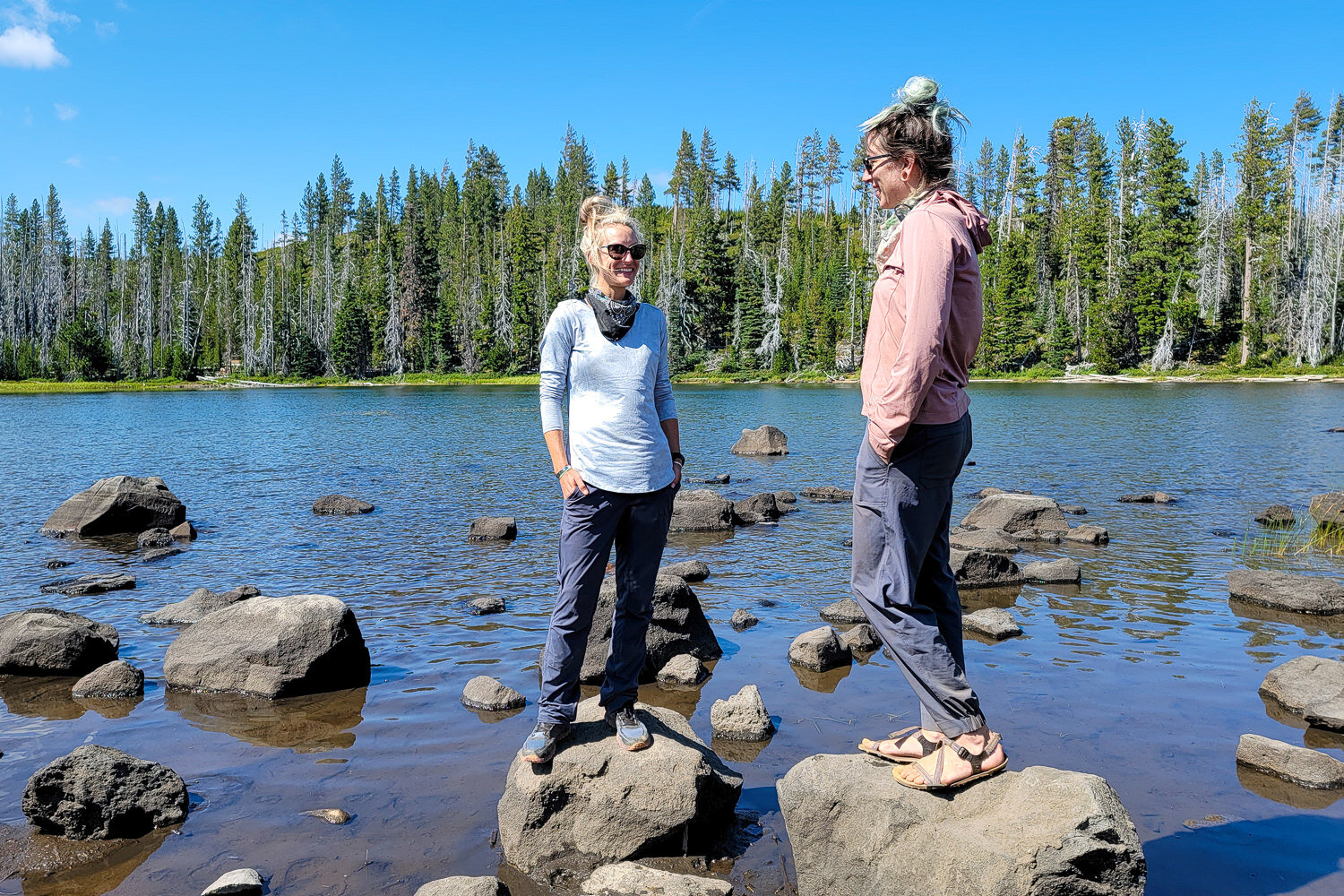
- KUHL Spire Roll Up: KUHL uses the same nylon thread that’s used for climbing harnesses, so these pants are built extra strong. We love the height of the roll-up snap; it hits about mid-calf and is great for water crossings and temperature control. The Spire pants were pretty great overall, but we couldn’t get over the fact that the main material is cotton. Cotton absorbs moisture (including sweat!) and dries slowly – it’s typically not the best choice for hiking.
- KUHL Innovair Skinny Pants: The Innovairs have a flattering, streamlined fit and transition easily from town to trail. The fabric is durable, but also plenty breathable so these pants can be worn throughout the year. The skinny-leg cut works just as well with boots in the fall and winter as it does with sandals and low-cut shoes when it’s warm out. These stylish pants didn’t make our final list because they’re a bit less technical than others.
- Marmot Lobos Convertible: Designed with the option to roll-up the legs or convert to shorts. The Lobos pants have a super soft waistband that is comfortable underneath a hip belt, and the shorts have a much nicer fit than other convertible pants we’ve tried. That said, we really don’t like how thick the seams are at the conversion zipper. They cause chafing when you walk, which was a dealbreaker for us.
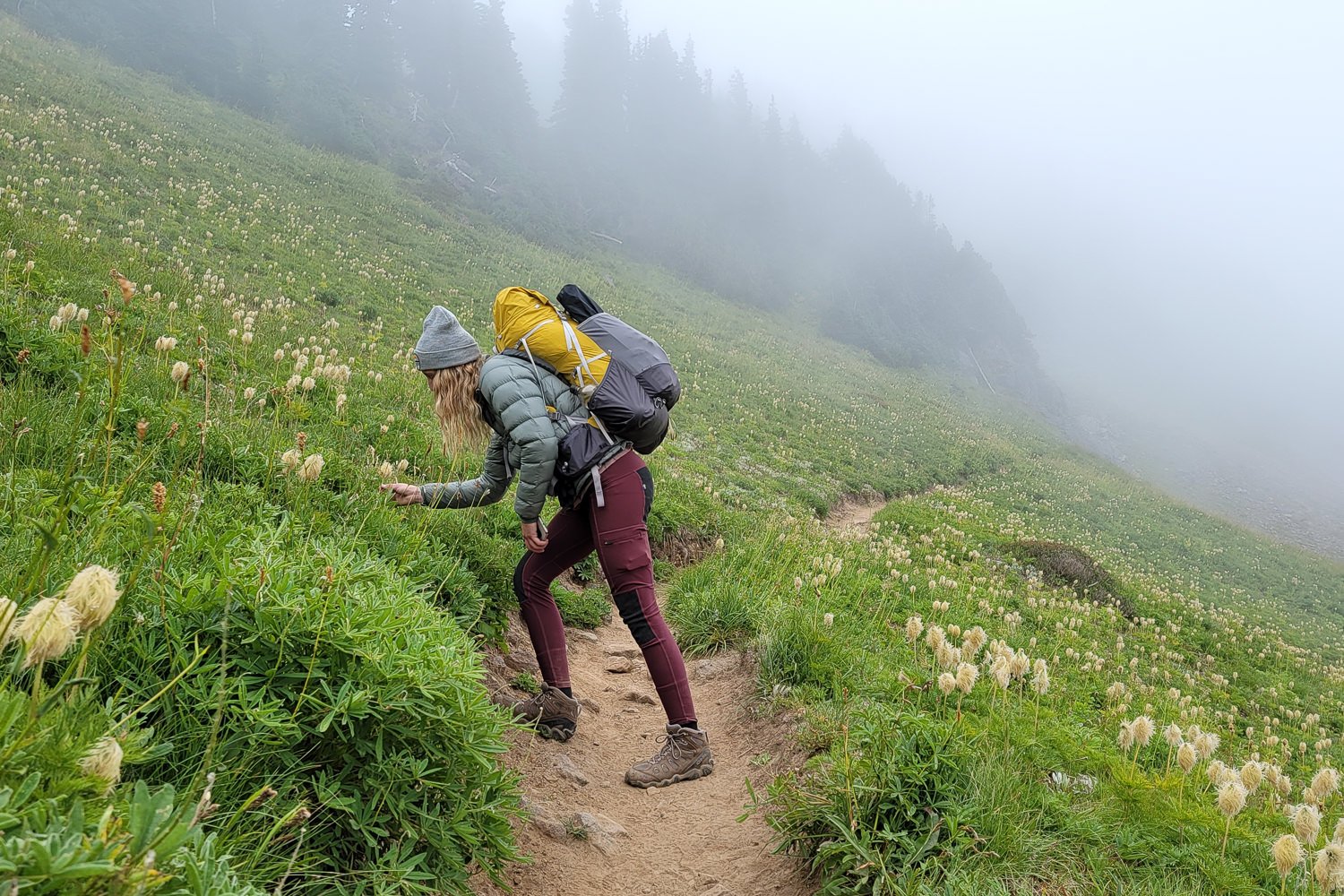
Pants vs. Shorts vs. Leggings
PANTS:
Hiking pants offer a lot more protection from the elements, bugs, and harmful plants than shorts or most leggings. If you’re hiking in an area where the weather can change quickly or where the threat of pests such as ticks is increased, pants are probably the better choice. Of course there are some downsides to pants – it can be harder to regulate your body temperature in pants, they’re usually heavier, and they may limit some movement when you need to do rock scrambles or climb over blow-downs. Convertible pants and roll-up pants give you more control over body temperature; we tend to prefer roll-ups because they typically have a more flattering fit and are lighter weight than convertible pants.

SHORTS:
Hiking in shorts can be a lot more comfortable than hiking in pants, and shorts are the lighter weight option. We love wearing shorts for most of our summer adventures when getting cold isn’t something we have to worry about. For colder months, shorts can be paired with a good set of base layer bottoms to keep you toasty. That said, shorts will leave you open to things like scrapes from rocks and thorns, sunburn, and mosquitoes. Shorts typically don’t have as many useful pockets for storing things you might want to access quickly like your phone or a map. We have a full list of the Best Hiking Shorts, but here are a few of our favorites:
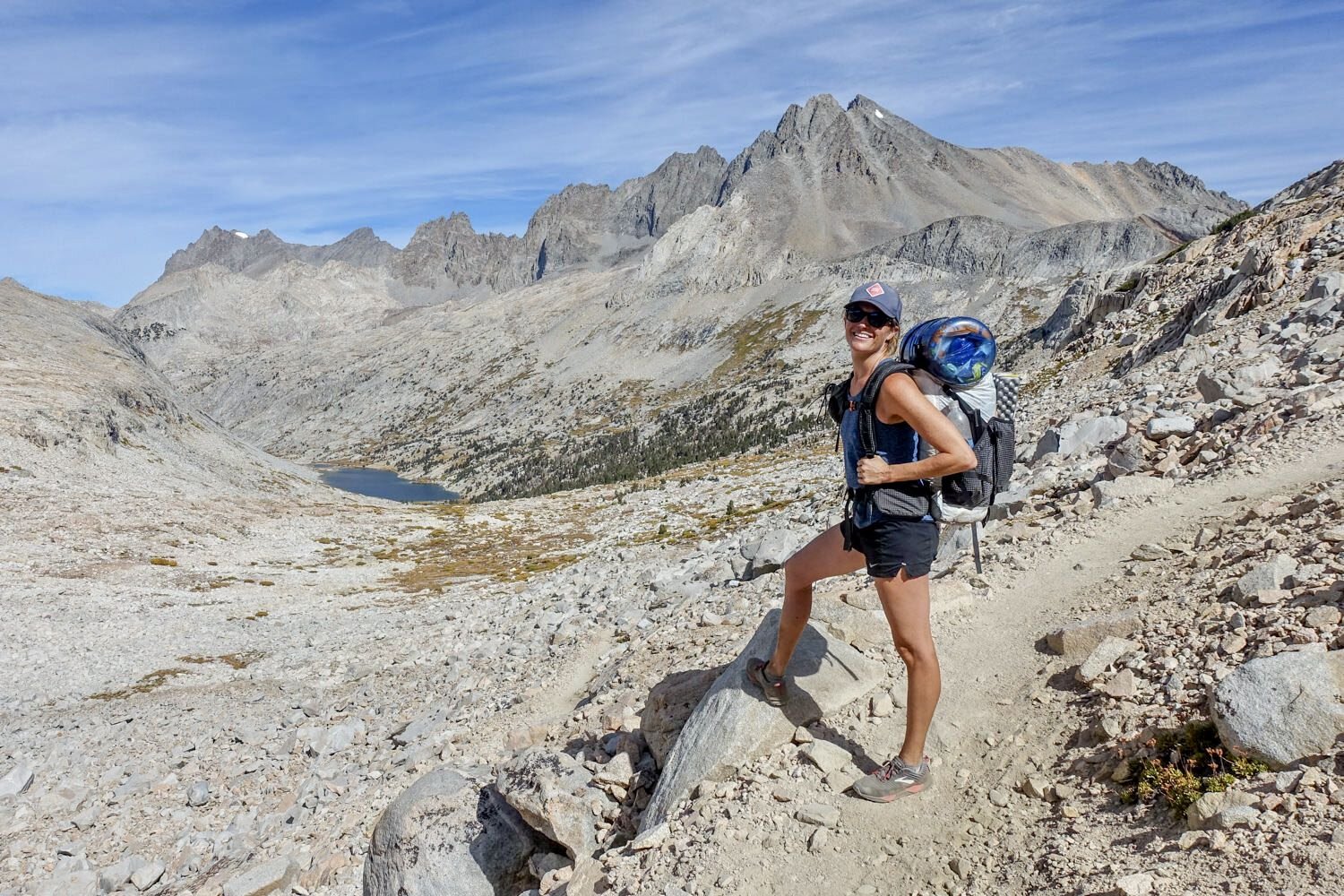
LEGGINGS:
Hiking leggings are becoming a more common sight on trail because they’re super comfy and offer more protection than shorts. Leggings can shield you from the elements like pants do, but they don’t limit movement because they’re stretchy. Leggings typically aren’t as durable as hiking pants, and they aren’t quite as breezy as shorts. The tighter fit of leggings can cause more sweat which can sometimes lead to chafing. Some hiking leggings include a pocket for a phone, but most have no pockets beyond that. We have a full list of the Best Women’s Hiking Leggings, but here are a few of our favorites:
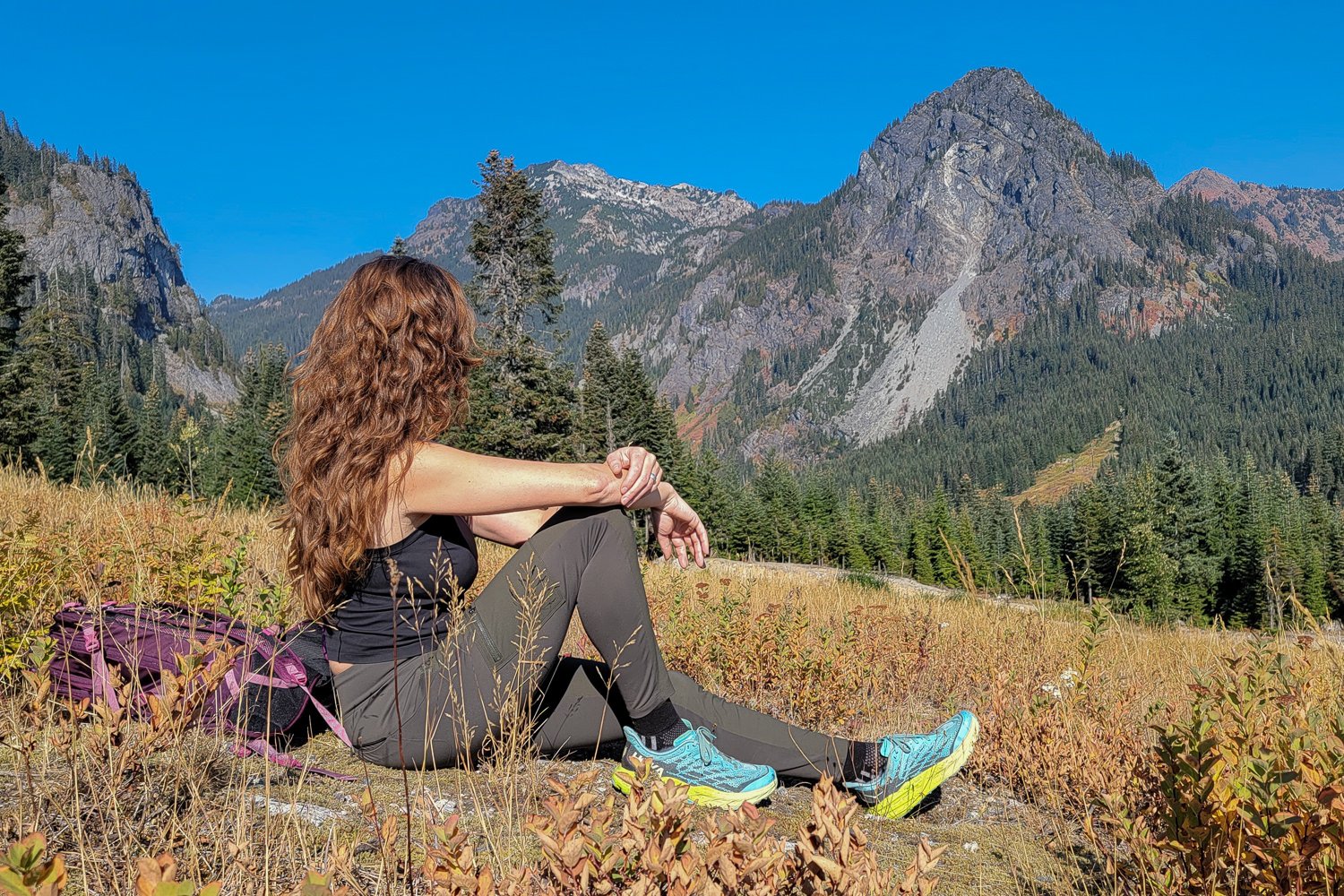
Critical Hiking Pants Considerations
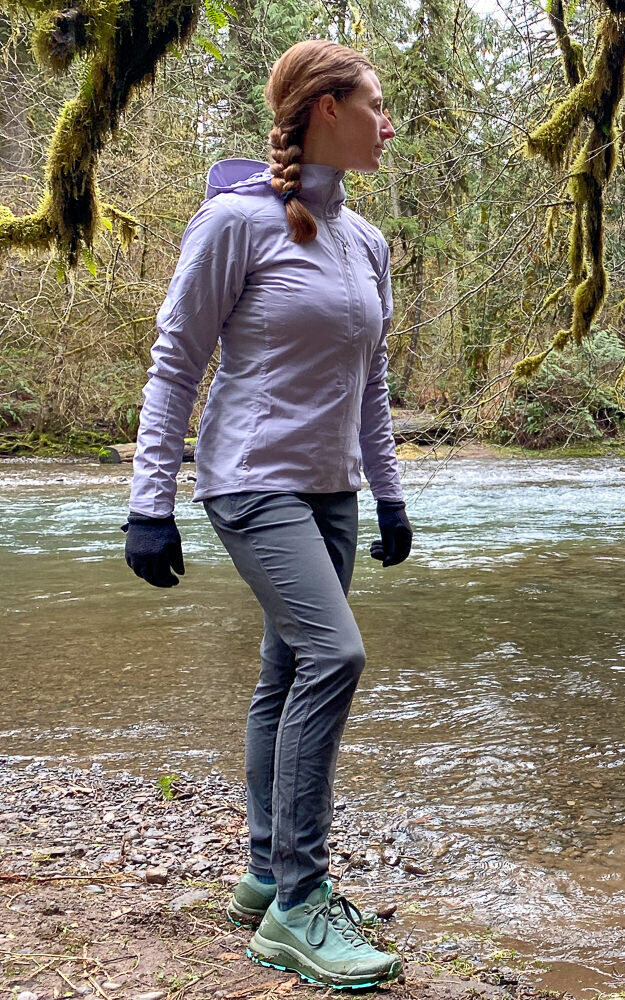
FABRICS MATTER
The fabrics that work best for hiking pants are synthetics that are durable and don’t absorb moisture. Stretchy fabrics like spandex/elastane that allow for easy movement are important too.
- Nylon – Nylon is an exceptionally durable synthetic fabric that dries quickly. It tends to feel slightly softer on the skin than other synthetic fabrics. Because of the way nylon is made, it tends to be a bit pricier.
- Polyester – Polyester is very durable (although slightly less so than nylon), and naturally hydrophobic. Polyester absorbs less water than nylon and wicks moisture to the surface more effectively where it can evaporate and dry quicker. Polyester is also less prone to pilling – pilling doesn’t affect the performance of the fabric, but can be less aesthetically pleasing.
- Cotton – Cotton is soft and comfortable against the skin, but it absorbs water. Cotton dries very slowly, can stick to the skin and cause chafing when wet, and can be potentially dangerous in cold/wet climates. We generally don’t recommend cotton for any extended hiking trips.
- Spandex/elastane – Good hiking pants should have some spandex/elastane content for mobility. Most pants we tested have two-way stretch, which means they only stretch one direction (typically crosswise). These pants will stretch across your thighs and knees when you have to climb over blowdowns or do boulder scrambles. Some pants have four-way stretch which means the fabric stretches crosswise and lengthwise, these pants will be overall easier to move around in and will feel less inhibiting.
FIT/ STYLE
- Relaxed fit – Hiking pants with a relaxed fit are generally more comfortable for all day wear. The roomy fit makes them easier to move around in, and it can be easier to stay cool in pants with a little more wiggle room.
- Slim fit/ straight leg – Hiking pants with a slimmer fit tend to be more lightweight than relaxed fit pants. Slim fit pants transition really well from town to trail, because they look more like everyday pants than hiking pants. Hiking pants with a slim fit need to have some stretch so that they don’t impede movement.

- Articulated knees & gussets – Pants with articulated knees have special seams sewn in that make them easier to move around in. By comparison, when you hike with pants that don’t have articulated knees, you may feel the fabric pulling on you when you take a big step up. Similarly, gussets are an extra sewn in patch of fabric, usually at the crotch of the pants, that improves the fit and mobility.
- Integrated belts – Pants with integrated belts or internal drawcords at the waist give you the ability to dial in the fit. This can be really helpful for those who are in-between sizes. We also find that integrated belts are useful for extneded hiking trips where weight tends to fluctuate a little.
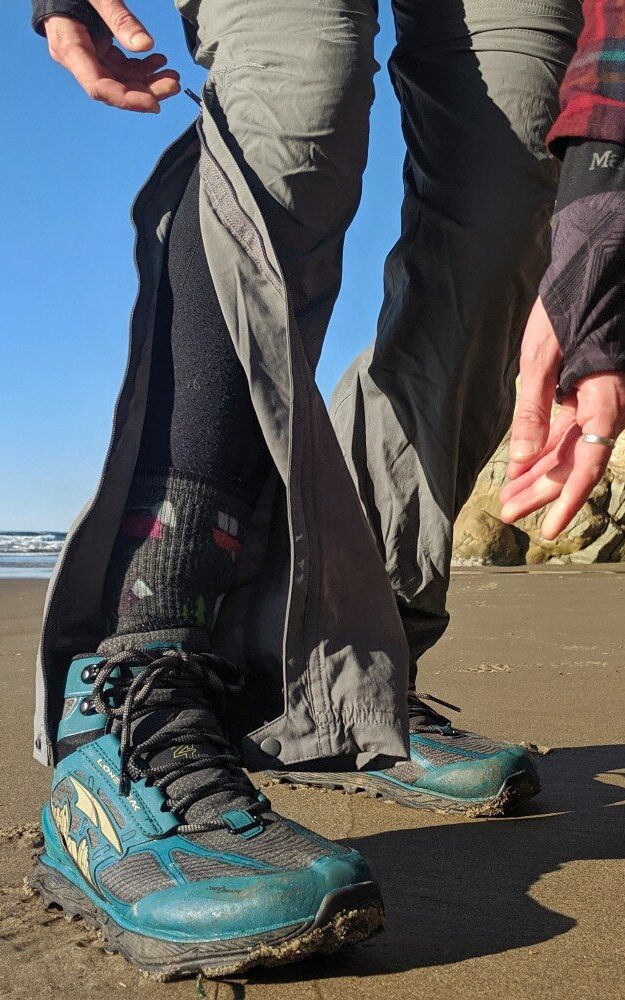
POCKETS
We tend not to use most of the pockets on hiking pants because items stored in them can feel bothersome and can impede movement. We generally prefer pants with fewer pockets because they look more sleek and feel more comfortable.
- Back pockets – We almost never use back pockets because they’re hard to access with a backpack on and things stored there get in the way when we want to sit down.
- Front pockets – Front pockets can be useful around camp and in town, but we rarely use front pockets on the trail because it’s hard to access them with a hip belt on. When items are stored in front pockets, lifting your leg over logs and boulder scrambling can be uncomfortable.
- Side pockets – We think the most useful pocket on a pair of hiking pants is one that sits on the side of your thigh and is large enough to accommodate a smartphone. We may store a map and sometimes our phone in this pocket for quick access. That said, when possible we like to leave these pockets empty as well (and use our hip belt pockets instead) for freedom of movement.
CONVERTIBLES VS. ROLL-UPS
- Convertibles – We like convertible pants for the obvious reason – they’re pants and shorts. The ability to switch between the two with one article of clothing can save weight and pack space, since you don’t have to pack multiple bottoms. That said, convertible pants tend to have a very relaxed fit that can feel a little too baggy for us. If you wear your convertibles in shorts mode more often than pants mode, you will likely notice a stark difference in color between the shorts and the pant legs as well.
- Roll-ups – We generally prefer roll-up pants over convertibles. Roll-ups tend to have a more flattering fit, and transition easily from town to trail. You can quickly change the length of roll-ups without having to worry about separate pieces like convertible pant legs and without having to deal with awkward color differences between the top and bottom over time. The one big drawback is that roll-up pants with thicker fabric can be uncomfortable when rolled.
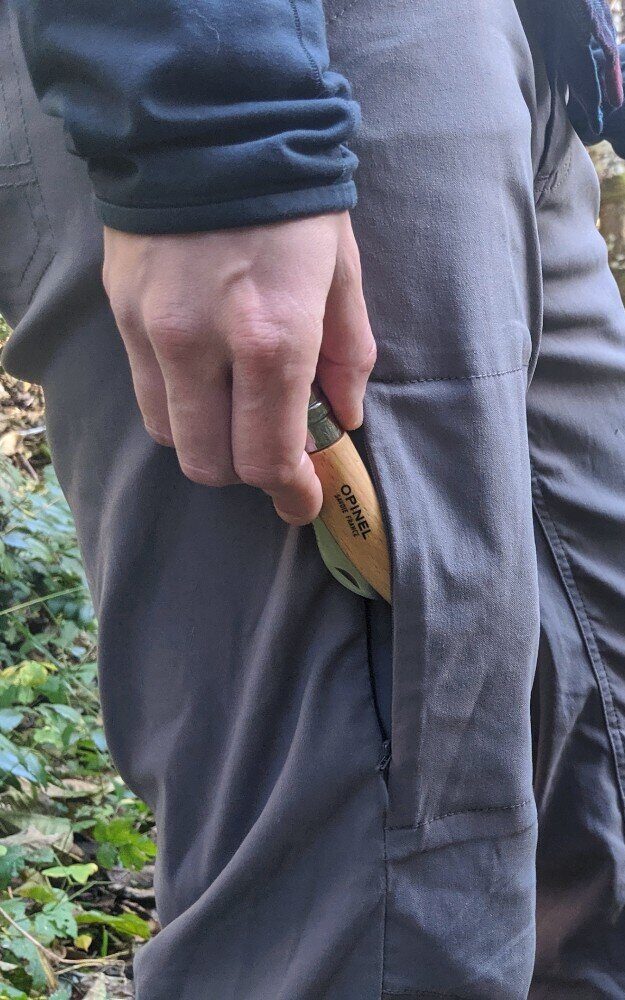
Technical Fabric Care
PRETREATED FABRICS/ MAINTENANCE:
Some technical clothing comes pretreated with water or bug repellent. These pretreatments aren’t permanent and they cost extra money. You can easily maintain a pretreatment or add your own water or bug repellent to your pants with these products:
- Water – To maintain or add water resistance to hiking pants we recommend usingNikwax TX.Direct Wash-In Water-Repellent Treatment. This treatment will maintain breathability while effectively causing water to bead and roll off the fabric. Keep in mind that this won’t make your pants completely waterproof, as most pants don’t have sealed seams and are constructed with fabrics that will absorb a small amount of water.
- Bugs – To maintain or add bug repellant to your clothing we recommend Sawyer Permethrin Pump Spray. This treatment will repel and kill ticks, mosquitoes, mites, and chiggers. It lasts about 6 weeks or 6 washings before you need to reapply it.
- Tears/ holes – To patch holes and tears, we recommend using the Noso Patchdazzle Gear Repair Kit. These patches don’t require any sewing or ironing, can withstand repeated machine washes, and are UV protective and waterproof.

GENERAL CARE:
Technical fabrics do require some special care to keep them performing their best for years. You should always follow the washing directions on the tags carefully, but here are some general tips to follow:
- Use a front loading washer – The agitator in a top loading washer can be hard on seams and can snag zippers or drawstrings. Make sure you zip all the zippers and tie the drawstrings before washing to prevent wear and tear.
- Use a technical fabric wash – We recommend Nikwax Tech Wash for washing any technical fabrics.
- Only wash when you really need to – A lot of technical fabrics are designed to be antimicrobial and shouldn’t hold odors. Hiking clothing doesn’t necessarily need to be washed after every trip.
- Don’t use fabric softener or dryer sheets – Fabric softener and dryer sheets can deposit residue on the fabric and affect the overall performance.
- Hang dry when possible – Heat and agitation in the dryer can damage technical fabrics.
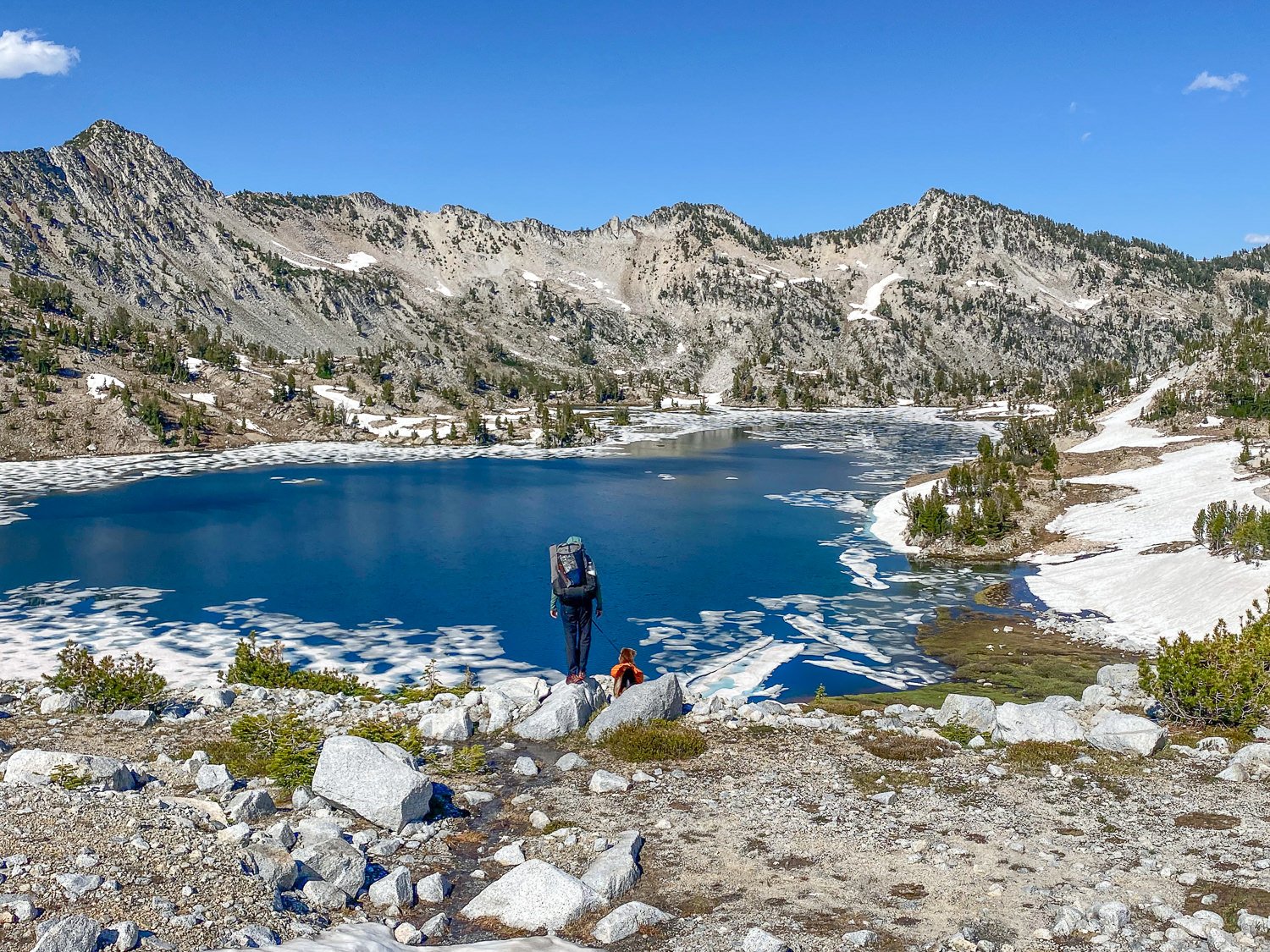
More Information
We hope this guide helps you find the perfect gear for your needs. If you have more questions or a suggestion, we’d love to hear from you! Sign up for our newsletter to stay updated on our latest posts then visit our Facebook page and Instagram to join the community conversation.
If you found this guide helpful, please share on social media and click the little heart button below to give us a digital high five! Also, be sure to check out our CleverHiker Gear Guide to see all of our top gear picks.
Thanks for reading and happy trails!



